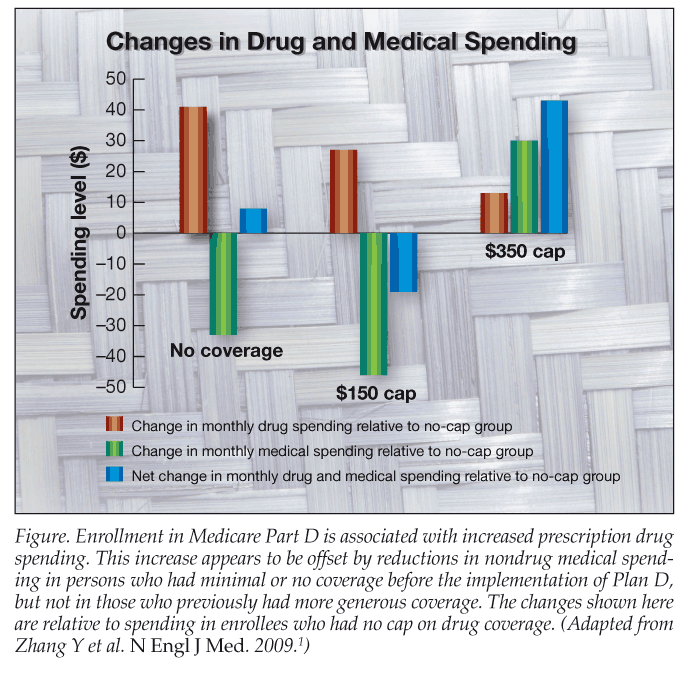- Clinical Technology
- Adult Immunization
- Hepatology
- Pediatric Immunization
- Screening
- Psychiatry
- Allergy
- Women's Health
- Cardiology
- Pediatrics
- Dermatology
- Endocrinology
- Pain Management
- Gastroenterology
- Infectious Disease
- Obesity Medicine
- Rheumatology
- Nephrology
- Neurology
- Pulmonology
How Has Medicare Part D Affected Medical Spending?
The Medicare Prescription Drug Benefit (Part D) was initiated to help protect beneficiaries from increasing drug costs and to reduce the cost-related underuse of medications. A recent study by Zhang and associates1 provides noteworthy information about how Part D has affected prescription drug and other medical expenditures.
The Medicare Prescription Drug Benefit (Part D) was initiated to help protect beneficiaries from increasing drug costs and to reduce the cost-related underuse of medications. A recent study by Zhang and associates1 provides noteworthy information about how Part D has affected prescription drug and other medical expenditures.
They analyzed the spending for prescription drugs and other medical care 2 years before and 2 years after the implementation of Part D. The study included 4 groups of elderly benefi- ciaries: Medicare Advantage enrollees with stable, uncapped, employer-based drug coverage throughout the study period (no-cap group); those who had no previous drug coverage; and those who had previous limited benefits, with either a $150 or a $350 quarterly cap, before they were covered by Plan D in 2006.

Compared with the spending increase in the no-cap group, the increase in the total monthly drug spending was $41 (74%) higher in enrollees who had no previous drug coverage, $27 (27%) higher in those with a previous $150 cap, and $13 (11%) higher in those with a previous $350 cap (Figure). The use of lipid-lowering and antidiabetic drugs increased in the groups with no or minimal previous drug coverage.
Compared with spending in the no-cap group, monthly nondrug medical expenditures were $33 lower in the group with no previous coverage and $46 lower in the group with the previous $150 cap. In contrast, medical expenditures were $30 higher in those with the previous $350 cap.
The authors say that the reduction in nondrug medical spending that was observed for enrollees with minimal or no previous coverage was probably the result of improved adherence to therapy among those with chronic conditions.1 Their data on enrollees with hypercholesterolemia and diabetes support this interpretation. Similarly, a study by Madden and colleagues2 found that cost-related medication nonadherence-such as not filling prescriptions or skipping or reducing doses- declined after the implementation of Part D. An earlier study documented that a cap on drug benefits was associated with poorer adherence to therapy and poorer control of blood pressure, lipid levels, and glucose levels in patients with hypertension, hyperlipidemia, and diabetes, respectively.3
References:
References
1. Zhang Y, Donohue JM, Lave JR, et al. The effect of Medicare Part D on drug and medical spending. N Engl J Med. 2009;361:52-61.
2. Madden JM, Graves AJ, Zhang F, et al. Cost-related medication nonadherence and spending on basic needs following implementation of Medicare Part D. JAMA. 2008;299:1922-1928.
3. Hsu J, Price M, Huang J, et al. Unintended consequences of caps on Medicare drug benefits. N Engl J Med. 2006;354:2349-2359.
